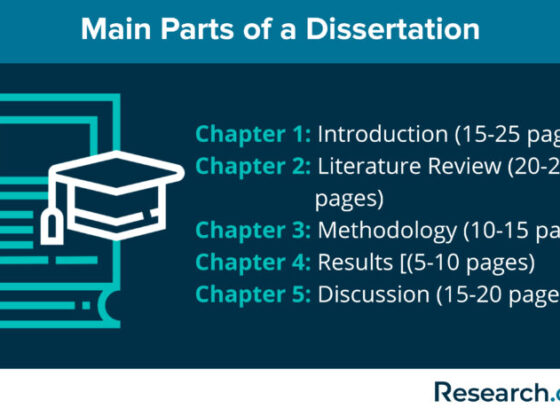Some Important Guidelines for Writing a Thesis or Dissertation
Writing a thesis may be viewed as an unpleasant hurdle on the road to your dream career—a draconian task to fulfill. But the outcome that it produces has lifelong benefits, which you can’t underscore. The whole research process is judged by the thesis produced. It is a written record of the research that a candidate undertakes. That is why it remains an important academic writing service, which shouldn’t be underestimated at any point in time. In this post, we have tried to accumulate some important guidelines for writing a thesis in phd.
You can also learn how to write a PhD thesis in three months. This way you will be successful in submitting your thesis on time. Some agencies are also efficient in writing a phd thesis in 1 month.
What is a thesis?
A thesis is a long piece of writing based on the ideas and research that a researcher undertakes as a part of a university degree, especially a higher degree program such as a Ph.D. and advanced research studies. A thesis demonstrates the researchers’ abilities to perform independent research under the supervision of a professor or supervisor in an institution of repute. It is also evidence of a candidate’s proficiency in academic research and appropriate academic communication.
Moreover, a thesis also demonstrates the mastery of a particular subject area and a researcher’s ability to create an original work of research. According to the Harvard University faculty guidelines for research and advanced studies, a good thesis must have two parts: first, it should tell what is planned to argue, and second, it should telegraph how to plan to argue. You may also hire an agency to write your thesis while following your all guidelines.
You May Also Like: SOP Writing After Getting it Rejected
3 Essential Qualities of a Well-Presented Thesis
As we all know how important first impressions are in life. Nevertheless, a well-written and proficient thesis should also make a good first impression. In fact, any thesis or dissertation content must project the research capability and acumen of a researcher. That is why it is also an art to proliferate academic excellence. It must include the following three most imperative elements:
i. Uniformity
When the ideas and paragraphs stand together in the thesis and the relationship between them is clearly represented, then the whole writing is said to have that uniformity sought.
ii. Coherence
A thesis is said to be coherent when it has a clear relationship and a smooth flow between the paragraphs.
iii. Development
In a thesis, each discussion must be amply supported with details, research references, and examples, wherever necessary.
Steps Towards Achieving a Great Thesis
Step 1: Select a good topic
The process of writing a thesis initiates the selection of a research topic. Prude University offers comprehensive guidance on how to choose a topic that can create wonders. Generally, researchers propose their topics, and then they discuss that with their supervisors. One can look into the recent volumes of journals and research papers to get an idea for a research topic for the thesis as guidance.
A few points worth noting while selecting your topic are:
- The topic should be of your interest
- The novelty of the topic must be taken into account
- The topic should be recent and worthy
- The availability of resources and data on that topic
- The relevance of the topic in your future career goals
Step 2: Searching relevant material and collecting data
American historian Daniel J. Boorstin once said that ‘the greatest enemy of knowledge is not ignorance; it is the illusion of knowledge.’ Research and collect materials as much as you can as this would only enhance the quality of your thesis.
Before getting into the writing process, it is crucial to have all the relevant materials at hand. Collecting data at this stage ensures a well-defined structure for your proposed thesis. This might also include crafting and using a questionnaire, making case studies, performing experimental tasks, etc. Being ready with such materials prior to the writing process will help shape and mold your thesis without facing any inconvenience or hurdles in the further steps taken.
Step 3: Create an outline
After the collection of the relevant materials, you will definitely have tons of ideas, resources, and notes to focus on. It is now the time to place all that stuff in the right order and create an outline for the thesis. The outline will help you create the logical flow of information in your thesis and will ensure that your particular thesis follows the set guidelines meticulously.
Such an outline will enable us to sketch down how to present your research findings effectively. It will also help to keep track of the evolution of your ideas, thus helping to determine the structure of your arguments. That will further allow you to synthesize your thesis into a unified and coherent piece of writing.
Step 4: The writing process
So far, you have chosen your topic, collected the materials, and drafted an outline for the thesis. These three things will ensure that you start the thesis-writing process on a good footing. Developing a thesis should now be an easier task to move ahead. The Academic Leadership at Rice University points out that a good thesis includes quality of research, soundness of logic, originality of ideas, and of course last but not the least lucidity of prose.
Step 5: Editing
Revision is a must to attain a perfect thesis. Approach professional content editing service providers to let them minutely assess your work. By taking help from the professionals involved in content rewriting services you will find your thesis being honed by skilled professionals. Always remember that reviewing it a couple of times will allow you to pick out most of the major flaws. Let other people, besides you, read some of the sections of your work, particularly your introduction and conclusion portions, for a perfect thesis outcome. Ask for their feedback. Review, revise, and refine as best as you can.
-: Structure of the Thesis:-

Regardless of the research topics and research orientation, generally, the organization of the thesis is more or less the same. The structure of a thesis includes preliminary pages (including a cover page, title page, acknowledgment, table of contents, and abstract), an introduction, a body, findings, and a discussion of the result, a conclusion and recommendations, references, appendices, et al. Below are some key elements about how to write a PhD thesis that must be incorporated while forming the structure of any thesis:
Title: The title of the thesis must postulate the sense of what you are examining. It must clearly demonstrate the topic and encapsulate what you have done. Massachusetts Institute of Technology brings to the fore the exclusive process of selecting a topic: ‘be sure to select a title that is a meaningful description of the content of your manuscript.’ Keep it short, catchy, and attention-grabbing.
Table of Contents: At first glance, it should indicate to the reader the organization and the logic of your thesis.
Abstract: An abstract is an overview of your whole thesis. It should provide a clear and good summary of the thesis and must remain interesting enough to capture the readers’ attention. An abstract provides the examiner with a fair idea of whether the rest of your thesis is of good quality and well-presented or not.
Introduction: The introduction of your thesis should be interesting and engaging. Write it in such a manner that it logically flows but keeps it short, crisp, and to the point. The introduction should include:
Literature Review: The literature review includes the works of the experts in your field as valid and effective references. Up-to-date information from the most recent books and publications should also be included in the literature review, along with journal article research. Learn the rules for writing a literature review.
Methodology: Here, try to justify why you preferred that particular method of research in your thesis over the rest and what makes it different and distinguished. Point out why your choice of a particular method is the most relevant one in your research.
Argument: State the problem as simplistically as you can. Describe what you have done in the thesis that hasn’t been done or known before. Mention the point of your research as well as how it fits in the knowledge gap of your field. Therefore, a clear argument is imperative because it convinces the reader of the validity of your work and its contributions to future research.
Body/Core Chapters: Before you start writing, it is important to consult the supervisor about what he or she expects from you. Indicate it clearly for every section and subsection, i.e., headings and subheadings.
Findings and Discussion of the Results: If your thesis has data collection of any sort, then this chapter is important for you. This chapter demonstrates the results and findings that you arrived at. Here you must present the answers to your earlier-drafted research questions. This is a pivotal chapter that must be drafted very cautiously.
Conclusion: It must beautifully sum up your whole thesis. Keep it as short and relevant as possible. It should, in a nutshell, include all the key points and concepts that you have demonstrated in your thesis.
Referencing: Check the referencing format used in your University or College and adhere to that properly. Referencing helps in tracking the foundation on which your research is built. It demonstrates which part is previous knowledge and which is your original work. Know About In-Text Citations too.
Appendices – These include a list of equipment used in the experiments, details of procedures, questionnaires, interview schedules, tables, charts, and all other materials and reference data that is not easily available.
Points the Students Are Unaware of
- Read the research ethics of your university before you began
- Always use a formal academic tone throughout your writing
- Avoid using the personal pronouns
- A well-written paragraph and consequently a well-written thesis follow the formula of ‘TEE’. T represents the Topic or the Controlling Idea, E is about to Explain and Elaborate, and E means Examples, Evidence, and Illustrations et al.
- Write one main idea per paragraph
- Avoid fancy words or decorative sentences
- Heading style, font size, font style, layout, etc., should be consistent.
- You can start by writing the core chapters of your thesis rather than starting to write the introduction itself.
- Never be verbose. Learn how to write PhD thesis fast.
Conclusion: Some Important Guidelines for Writing a Thesis or Dissertation
Finally, set for yourself deadlines for completing the thesis; otherwise, you will be tempted to make it perfect every other time. Keep going on and read some important guidelines for writing a thesis in phd! As you are on your way to achieving your goal, in the end, the effort will be well worth it. You can also seek assistance from professional academic writing agencies and avail of their services. Approaching the right team will ensure that you are guided by the experts to ensure that your thesis looks professional and appealing to fulfill its purpose.
Let me know if you have questions about the Guidelines for Writing a Thesis or Dissertation.
You May Also Like: Mistakes to Avoid While Writing Research Papers













Very educative
Thanks Girish!
Very interesting details you have observed, thanks for posting.
Hi Dena,
Thanks for reading this blog.